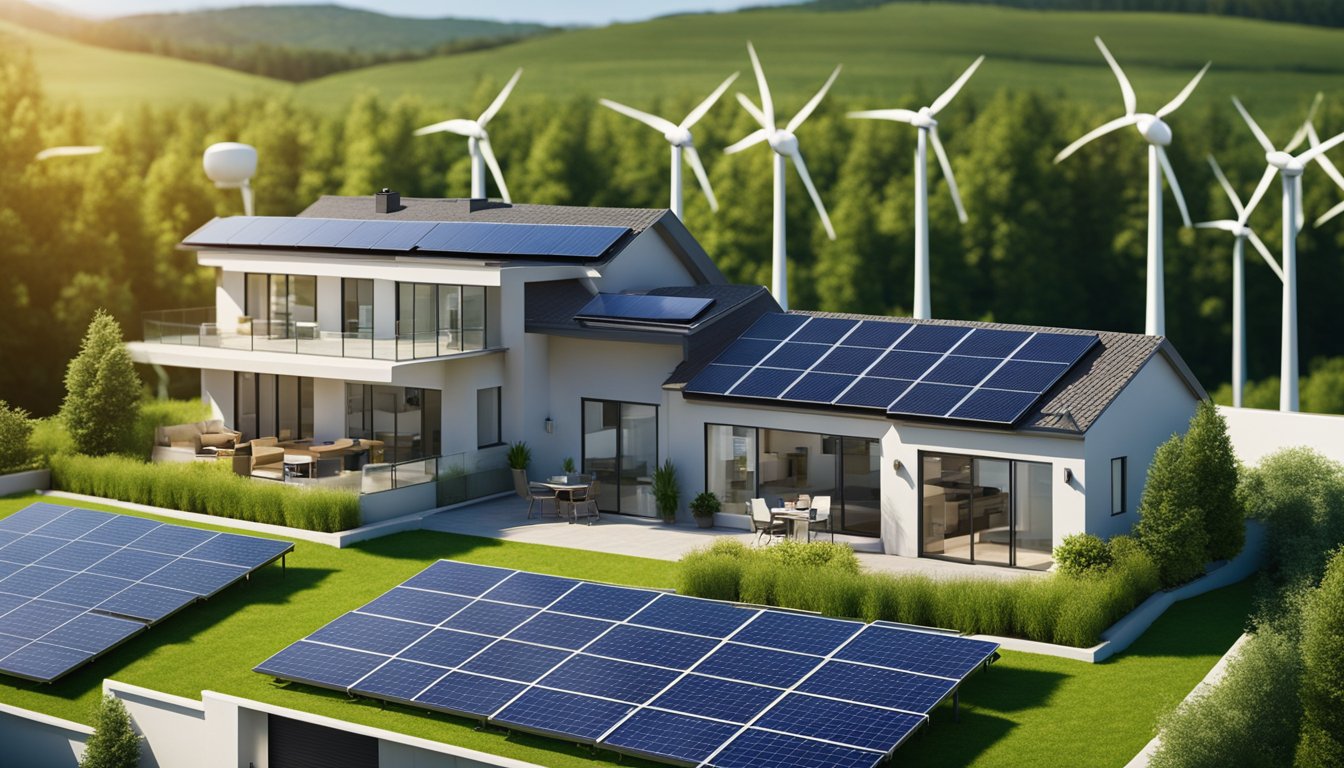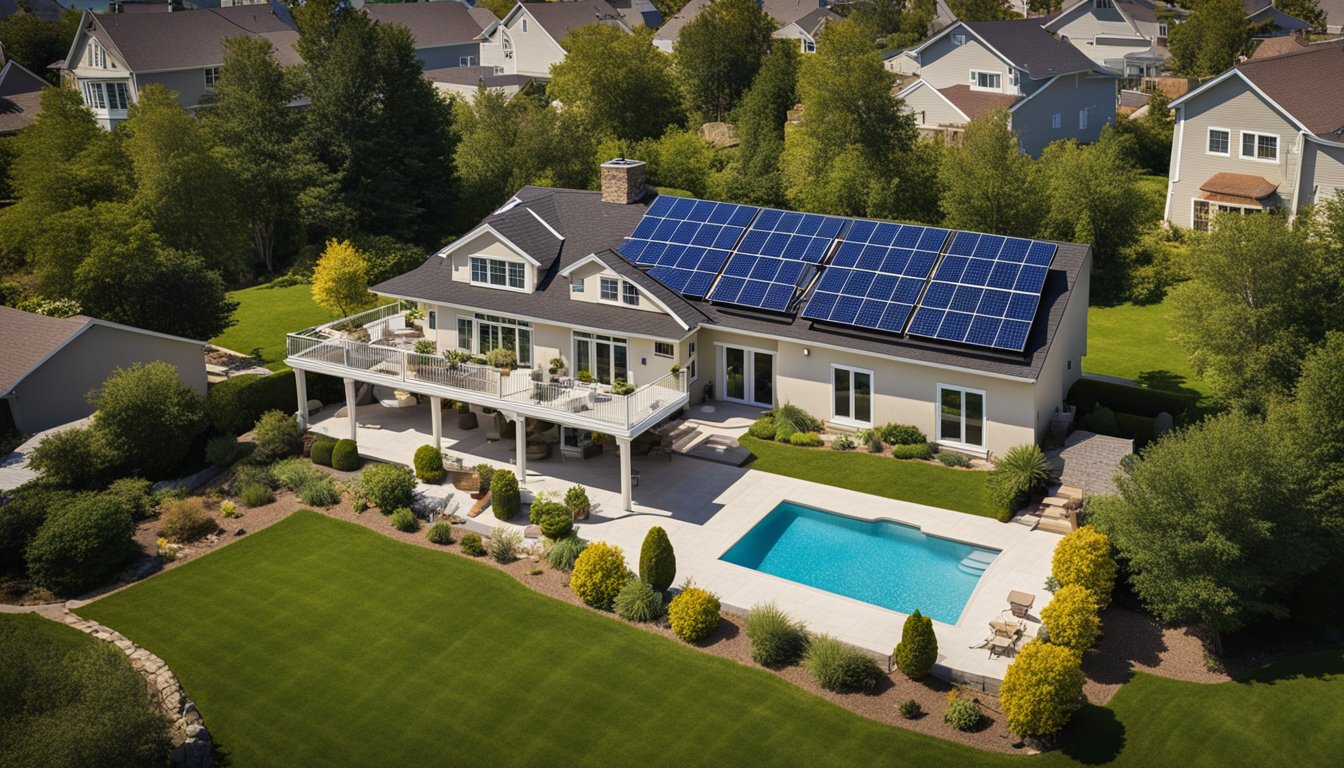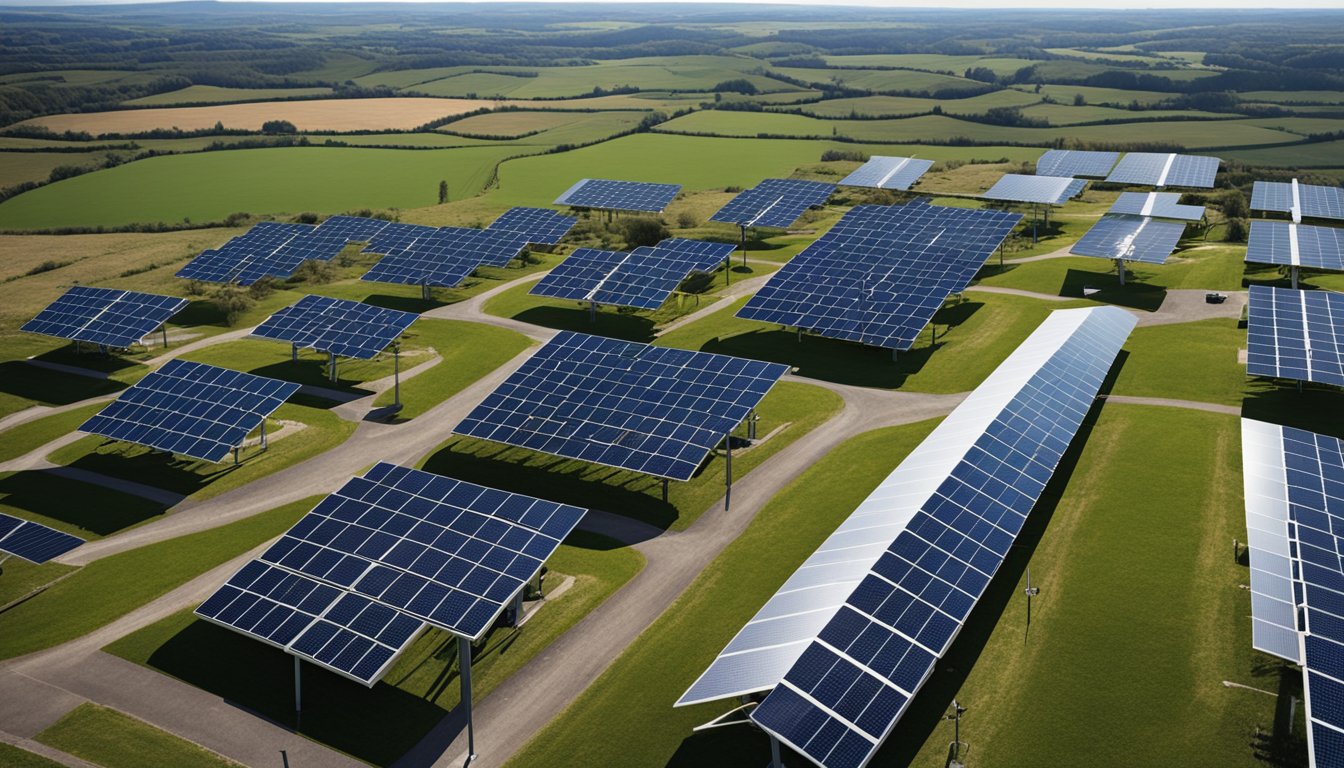Late updated: 27 Feb 2025 08:02
Written by: Eleanor Hartman
Balancing Solar And Wind Energy For UK Homes: Efficient Integration Strategies
Harnessing the power of the sun and wind offers UK homeowners a transformative approach to energy sustainability. As our electrical grid transitions towards greener sources, combining solar and wind technologies at home can significantly reduce reliance on traditional energy systems. By integrating solar panels with wind turbines, we can create a hybrid system that maximises energy production and ensures a consistent power supply, even in varying weather conditions.

With climate change intensifying the push for cleaner energy, exploring renewable options like solar and wind has become not just preferable but essential. The UK is already a leader in deploying renewable energy solutions, with substantial investments in offshore wind and other projects. For individual homeowners, adopting a hybrid energy system is a step towards energy independence and contributes to the broader goal of decarbonisation.
Energy sustainability isn't just about reducing carbon footprints; it's about preparing for a future where clean energy powers our homes and lifestyles. As we look to empower ourselves with these technologies, the efficient balancing of solar and wind energy offers a practical and forward-looking solution. Whether you are looking to reduce your environmental impact or protect against rising energy costs, the integration of these renewable resources into home systems holds valuable insights for all UK homeowners.
Key Takeaways
- Hybrid systems optimise solar and wind energy for consistent power supply.
- UK leads in clean energy initiatives, offering sustainable home solutions.
- Homeowners can achieve energy independence and reduce carbon footprints.
UK's Renewable Energy Landscape
The United Kingdom's renewable energy sector has transformed significantly in recent years, focusing on solar and wind energy. Both national grid efforts and increased energy storage solutions contribute to this shift.
The Growth of Solar and Wind Energy
Over the past two decades, we've witnessed a remarkable surge in solar panels and wind turbines across the UK. The push for cleaner energy sources has led to wind and solar accounting for significant portions of the energy mix. Offshore wind projects, in particular, have rapidly evolved, effusing greater efficiency and capacity.
The UK government has encouraged growth through policies and incentives, making renewable sources more accessible to the public. These advancements have paved the way for transitioning into a low-carbon economy, positioning us as a leader in renewable energy sources.
National Grid's Role in Clean Energy
The National Grid has played a pivotal role in integrating renewable energy into our daily lives. By developing a robust infrastructure capable of handling fluctuating outputs from variable renewables, they ensure a steady supply of power. Through smart grid technologies, we have enhanced capabilities to effectively manage and distribute electricity more efficiently.
By investing in energy storage and balancing technologies, the grid aids in counteracting the intermittent nature of solar and wind energy. This development has not only bolstered the resilience of energy systems but also supported efforts toward achieving net-zero targets.
Energy Demand and Supply Dynamics
Balancing energy supply with demand is crucial for maintaining grid stability. In the UK, electricity demand patterns are evolving as more households adopt renewable technologies. The expansion of offshore wind and solar farms means that there is a growing need for agile energy storage solutions to manage surplus production.
Understanding the balance of energy inputs and outputs allows us to predict when supply may fall short of demand. By analysing these dynamics, we can implement adaptive strategies, ensuring that during peak demand periods, sustainable and reliable power remains consistently available to our homes and businesses.
Integrating Solar and Wind Energy for Home Use

Integrating solar and wind energy into home systems provides a unique chance to harness renewable resources productively. Emphasising components such as energy storage, technology for grid balancing, and successful case studies will enrich this understanding.
The Importance of Energy Storage
Energy storage is crucial for maintaining a stable power supply, especially when integrating solar and wind energy. Batteries play a pivotal role in this system. They store excess solar and wind energy produced during peak times, ensuring availability when production is low. This stored energy can power homes during the night or during periods of low wind or sunshine.
Using highly efficient battery storage technologies helps in tackling the intermittent nature of renewable sources. In the UK, smart meters are often used to monitor energy flows, optimising consumption and storage. Moreover, interconnectors can support grid reliability by sharing surplus energy with other areas.
Advanced Technologies for Grid Balancing
For effective integration, advanced technologies are essential to balance the grid. Smart meters and automated control systems play an integral role. They monitor weather conditions and power demand, adjusting energy distribution from solar panels and wind power based on data.
Technological advances provide ancillary services to support the national grid. For instance, real-time data analytics can adapt energy use patterns, while demand response strategies can shift consumption to times when renewable energy is plenteous. These strategies ensure that renewable energy contributes significantly to system balancing and reduces reliance on fossil fuels.
Case Studies: Successes in Home Energy Systems
Several case studies in the UK highlight successful integration of solar and wind energy systems in homes. For instance, combining solar panels with small-scale wind turbines has allowed some homeowners to live largely off the grid. This is especially effective in areas with strong wind potential.
One notable example is a rural community that utilised a blend of wind energy, solar energy, and biomass. They managed to reduce their carbon footprint while maintaining energy independence. Another successful instance involved urban homes using battery storage to balance peak demand effectively, ensuring a consistent supply of renewable energy during peak times. These examples demonstrate how integrating these technologies can lead to a significant improvement in sustainability.
Frequently Asked Questions

As we explore the intersection of solar and wind energy for UK homes, we tackle common queries ranging from integration methods and costs to contributions to the national energy mix. We also address the role of battery storage and available incentives for homeowners.
How can homeowners effectively integrate solar and wind energy systems in the UK?
Homeowners can combine solar panels and wind turbines to ensure a more consistent energy supply. By leveraging both resources, we can offset periods of low sunlight with wind energy. A hybrid inverter might be necessary to manage these systems efficiently.
What is the typical cost of installing a combined solar and wind energy system for UK homes?
The cost varies based on system size, location, and specific requirements. Typically, installing both systems may range from £10,000 to £30,000. Financial considerations include equipment, installation, and potential savings on energy bills.
To what extent did solar and wind energy contribute to the UK's energy mix in recent years?
In recent years, solar and wind energy have become increasingly significant, providing around 28% of the UK's electricity. This shift demonstrates our growing reliance on renewable sources to meet energy demands and reduce carbon emissions.
What are the benefits and challenges of using battery storage to manage wind curtailment in the UK?
Battery storage helps manage excess energy produced during peak wind periods. Benefits include stabilising supply and reducing waste. Challenges involve high costs and technology limitations, requiring investment in advanced storage solutions.
How does wind turbine installation at home impact energy self-sufficiency in the UK?
Installing wind turbines at home enhances energy self-sufficiency by reducing dependence on grid power. This can lead to lower energy bills and increased energy security. However, considerations include installation costs and space requirements.
What incentives are available for UK homeowners looking to install both solar panels and wind turbines?
UK homeowners may benefit from incentives such as the Smart Export Guarantee (SEG), which pays for surplus energy exported to the grid. Additionally, some regions may offer grants or financial support to reduce installation costs.